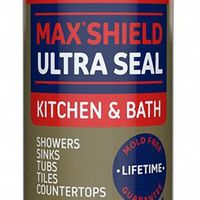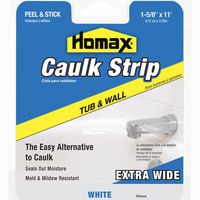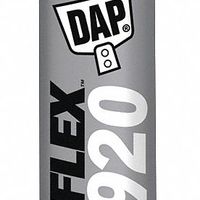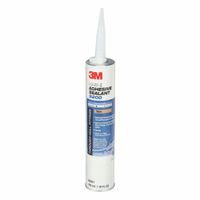Call +(254) 703 030 000 / 751 483 999 / 721 704 777
- Home
- Adhesives Sealants And Tape
- Caulks Sealants Gasket Makers
- Caulks Sealants
.....Read More
Frequently Asked Questions
What is the difference between silicone and polyurethane caulk?
Silicone and polyurethane caulks are both used for sealing joints and gaps, but they have distinct properties and applications.
Silicone caulk is made from silicone polymers and is known for its flexibility and durability. It is highly resistant to moisture, UV rays, and extreme temperatures, making it ideal for areas exposed to water and sunlight, such as bathrooms, kitchens, and exterior surfaces. Silicone caulk adheres well to non-porous surfaces like glass, metal, and ceramic. It remains flexible over time, which helps it withstand joint movement without cracking. However, it is difficult to paint over and may not adhere well to porous surfaces.
Polyurethane caulk, on the other hand, is made from polyurethane polymers and is known for its strong adhesion and versatility. It adheres well to a wide range of materials, including wood, metal, concrete, and masonry, making it suitable for both interior and exterior applications. Polyurethane caulk is paintable, which allows for a seamless finish in projects where color matching is important. It is also more abrasion-resistant than silicone, making it suitable for areas with heavy wear. However, it is less resistant to UV rays and may degrade over time when exposed to direct sunlight.
In summary, silicone caulk is best for waterproofing and areas exposed to sunlight, while polyurethane caulk is preferred for its strong adhesion, paintability, and versatility across different materials.
How long does it take for caulk to dry?
Caulk typically takes about 24 hours to dry completely, but this can vary based on several factors. The type of caulk used is a primary determinant: silicone-based caulks generally dry faster, often within 30 minutes to an hour for skin formation, but require up to 24 hours for a full cure. Acrylic latex caulks may take longer, sometimes up to 48 hours, to fully cure. Environmental conditions also play a significant role. High humidity and cooler temperatures can extend drying times, while warm, dry conditions can speed up the process. The thickness of the caulk bead is another factor; thicker applications will naturally take longer to dry. It's important to follow the manufacturer's instructions on the packaging for the most accurate drying times. Additionally, while the surface may feel dry to the touch within a few hours, it's crucial to allow the full curing time to ensure the caulk achieves its maximum strength and flexibility.
Can you paint over silicone caulk?
No, you cannot paint over silicone caulk effectively. Silicone caulk is non-porous and has a slick surface, which prevents paint from adhering properly. If you attempt to paint over it, the paint will likely peel, chip, or flake off over time. For a paintable surface, you should use a paintable caulk, such as acrylic or latex caulk, which is designed to hold paint. If you need to paint over an area with existing silicone caulk, you should first remove the silicone and replace it with a paintable caulk.
How do you remove old caulk?
To remove old caulk, follow these steps:
1. **Gather Tools and Materials**: You will need a utility knife or a caulk remover tool, a putty knife or scraper, needle-nose pliers, a caulk softener or remover solution, a clean cloth, and rubbing alcohol or a mild detergent.
2. **Soften the Caulk**: Apply a caulk remover solution or a homemade mixture of vinegar and water to the old caulk. Let it sit for 15-20 minutes to soften the caulk, making it easier to remove.
3. **Cut the Caulk**: Use a utility knife or a caulk remover tool to cut along the edges of the caulk. Be careful not to damage the surfaces on either side of the caulk line.
4. **Remove the Caulk**: Use a putty knife or scraper to gently pry the caulk away from the surface. For stubborn sections, use needle-nose pliers to pull the caulk out. Work slowly to avoid scratching or damaging the surface.
5. **Clean the Surface**: Once the caulk is removed, clean the area with rubbing alcohol or a mild detergent to remove any residue. This ensures a clean surface for new caulk to adhere properly.
6. **Inspect and Repair**: Check for any damage or mold. Repair any issues before applying new caulk.
7. **Dispose of Old Caulk**: Properly dispose of the old caulk and any used materials according to local regulations.
By following these steps, you can effectively remove old caulk and prepare the surface for a fresh application.
What is the best caulk for bathroom use?
The best caulk for bathroom use is typically a 100% silicone caulk. Silicone caulk is highly recommended for bathrooms due to its excellent water resistance, flexibility, and durability. It is specifically designed to withstand the high-moisture environment of bathrooms, making it ideal for sealing around bathtubs, showers, sinks, and other fixtures.
Silicone caulk is mold and mildew resistant, which is crucial in preventing unsightly and potentially harmful growths in damp areas. It adheres well to non-porous surfaces like glass, ceramic, and metal, ensuring a long-lasting seal. Additionally, silicone caulk remains flexible over time, accommodating the natural expansion and contraction of materials due to temperature changes, which helps prevent cracking and leaks.
When selecting a silicone caulk, look for one labeled as "bathroom" or "kitchen and bath" to ensure it is formulated for high-moisture areas. Some popular brands include GE Silicone II, DAP 3.0 Kitchen, Bath & Plumbing High Performance Sealant, and Gorilla 100% Silicone Sealant. These products are known for their reliability and performance in bathroom settings.
For ease of application, consider using a caulk with a smooth finish and easy water cleanup. Some silicone caulks are available in a variety of colors to match your bathroom decor, while others are paintable if you prefer a custom color.
In summary, 100% silicone caulk is the best choice for bathroom use due to its water resistance, flexibility, and mold resistance. Opt for a reputable brand and ensure it is specifically designed for bathroom applications to achieve the best results.
How do you apply caulk smoothly?
To apply caulk smoothly, follow these steps:
1. **Preparation**: Clean the surface thoroughly to remove old caulk, dirt, and debris. Use a utility knife or a caulk remover tool for old caulk. Ensure the area is dry.
2. **Tape the Edges**: Apply painter’s tape along both sides of the joint to ensure clean lines and prevent caulk from spreading onto unwanted areas.
3. **Cut the Nozzle**: Cut the caulk tube nozzle at a 45-degree angle to match the width of the joint. A smaller opening is better for control.
4. **Load the Caulk Gun**: Insert the caulk tube into the caulk gun. Ensure it is secure and the plunger is properly engaged.
5. **Apply the Caulk**: Hold the gun at a 45-degree angle to the surface. Squeeze the trigger gently and move the gun steadily along the joint. Apply even pressure to ensure a consistent bead of caulk.
6. **Smooth the Caulk**: Immediately after application, smooth the caulk using a caulk finishing tool or your finger dipped in water or a soapy solution. This helps to press the caulk into the joint and create a smooth finish.
7. **Remove the Tape**: Carefully remove the painter’s tape before the caulk begins to set to avoid pulling away any caulk with it.
8. **Clean Up**: Wipe away any excess caulk with a damp cloth. Clean your tools and hands promptly.
9. **Cure Time**: Allow the caulk to cure as per the manufacturer’s instructions, usually 24 hours, before exposing it to water or other elements.
By following these steps, you can achieve a professional-looking, smooth caulk line.
Can caulk be used outdoors?
Yes, caulk can be used outdoors. It is commonly used to seal gaps and joints in exterior applications to prevent water, air, and insect infiltration. When selecting caulk for outdoor use, it is important to choose a product specifically designed for exterior conditions. These caulks are formulated to withstand various weather conditions, including rain, snow, UV rays, and temperature fluctuations.
Silicone and polyurethane caulks are popular choices for outdoor use due to their durability and flexibility. Silicone caulk is highly resistant to UV rays and remains flexible over time, making it ideal for areas exposed to direct sunlight. Polyurethane caulk is known for its strong adhesion and ability to bond to a variety of surfaces, including wood, metal, and masonry.
Acrylic latex caulk is another option for outdoor use, especially for areas that will be painted. It is easy to apply and clean up with water, but it may not be as durable as silicone or polyurethane in extreme weather conditions.
When applying caulk outdoors, ensure the surface is clean, dry, and free of debris for optimal adhesion. It is also advisable to apply caulk when the temperature is within the recommended range specified by the manufacturer, typically between 40°F and 80°F (4°C and 27°C).
Properly applied outdoor caulk can last for several years, providing a reliable seal that protects against moisture and drafts. Regular inspection and maintenance are recommended to ensure the caulk remains intact and effective.



